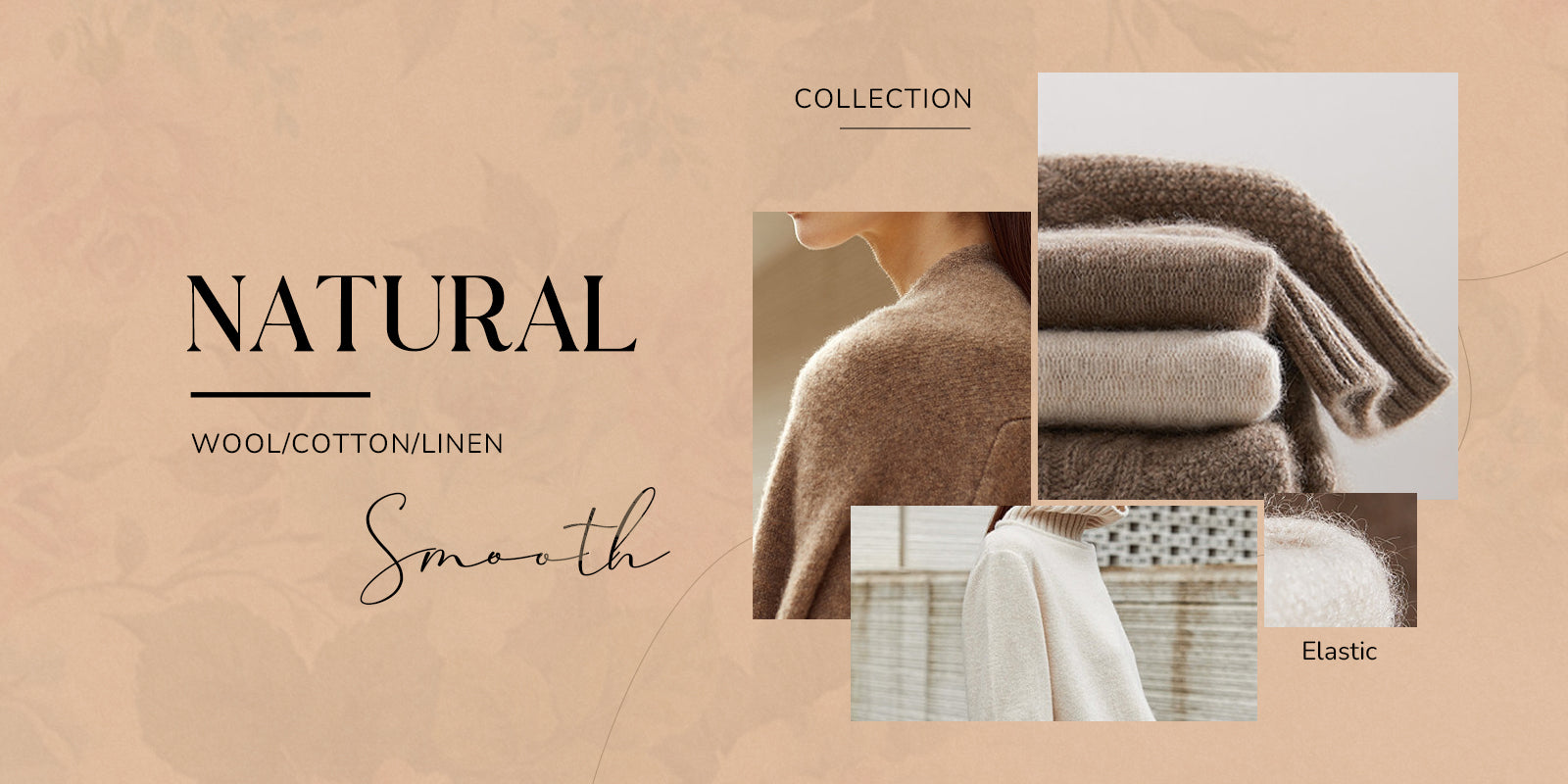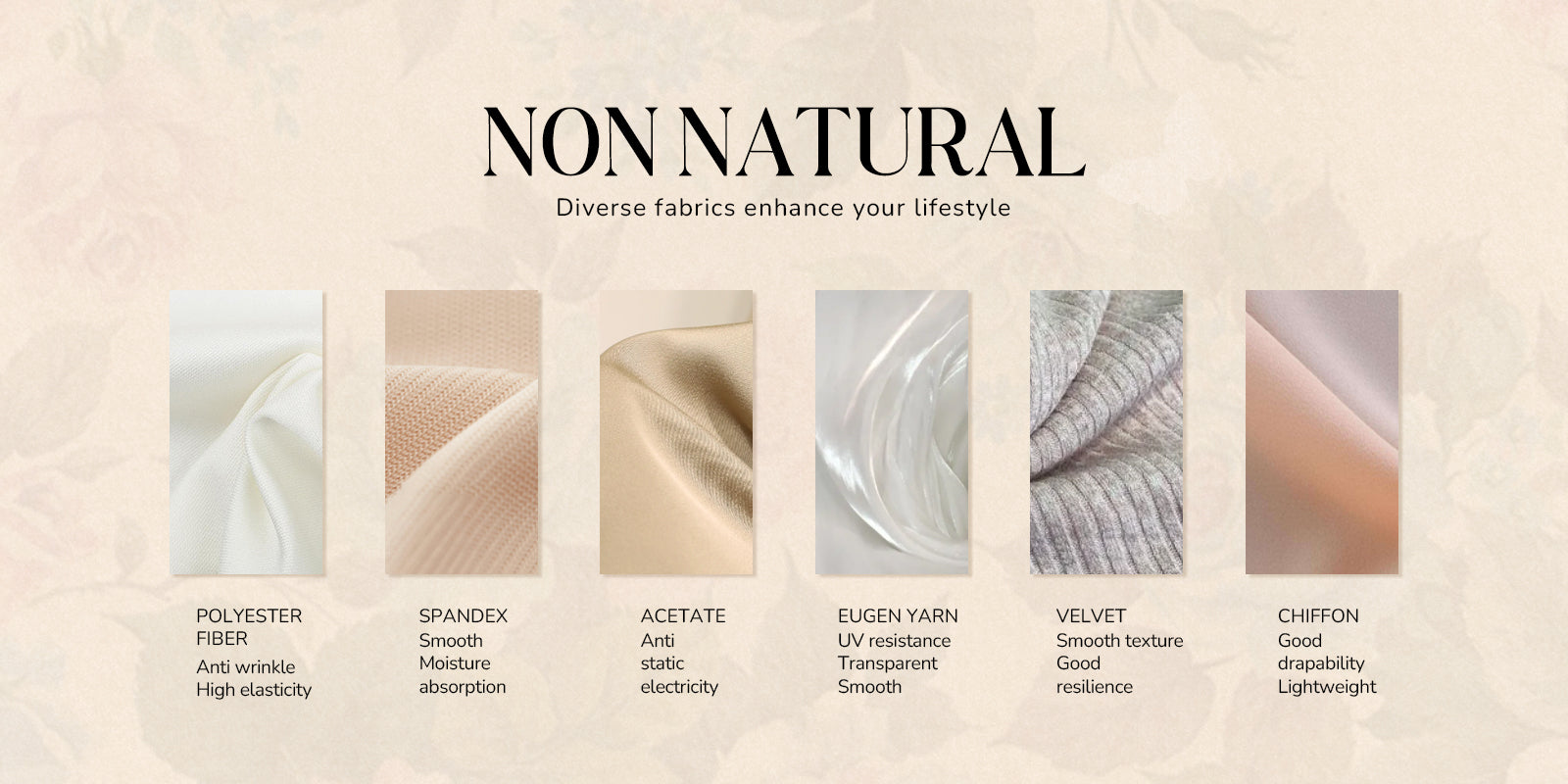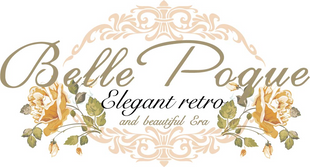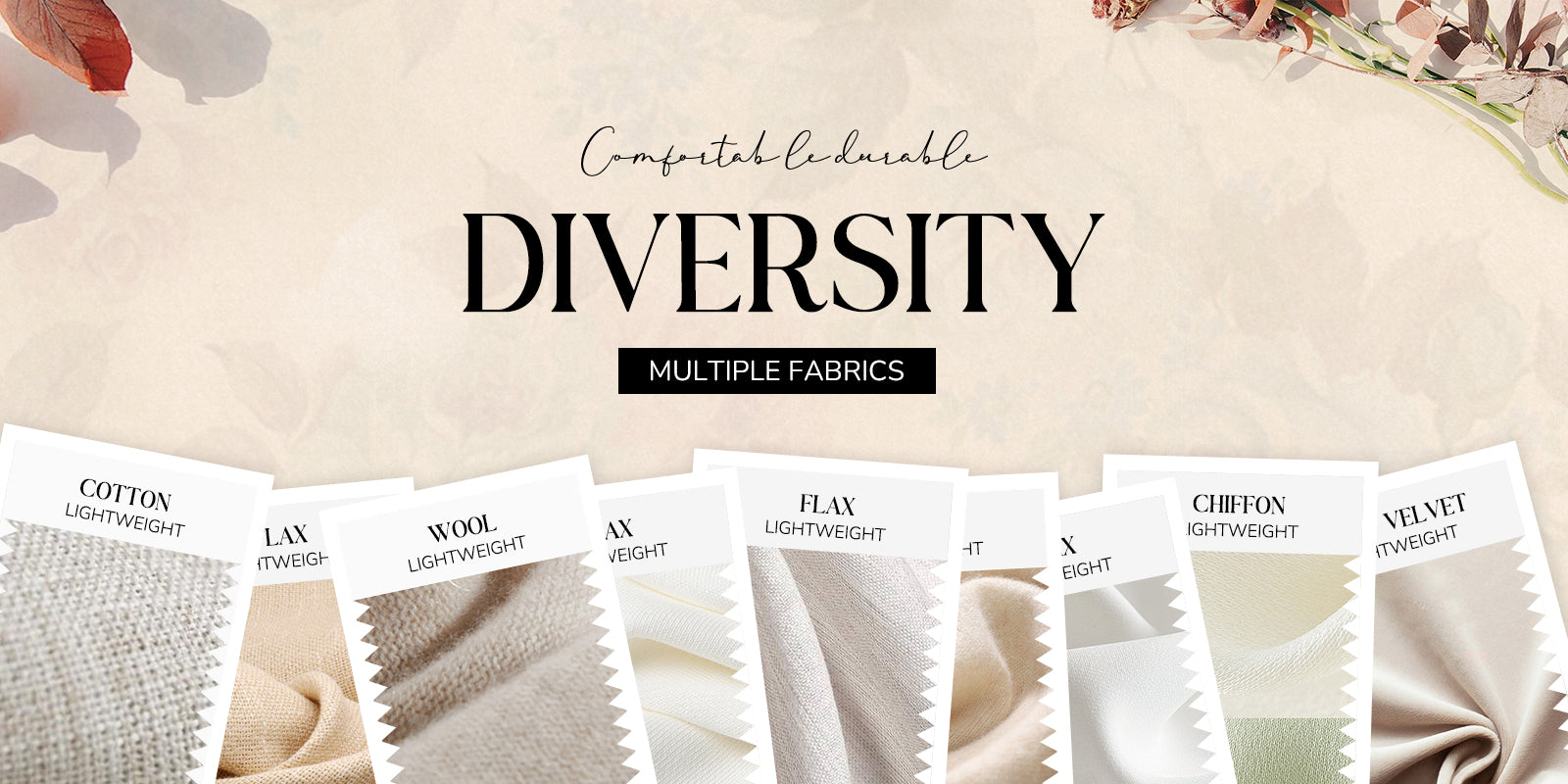Understanding Fabrics: A Basic Guide to Choosing the Right Clothing for You
In the world of fashion and textiles, the choice of fabric can significantly impact the comfort, style, and durability of clothing and other items. With so many options available, from natural fibers to synthetic materials, navigating the realm of fabrics can be daunting. However, armed with a basic understanding of the characteristics of different fabrics, you can make informed decisions that suit your preferences and needs.
Natural fabrics are divided into plant fibers and animal fibers. Plant fibers include cotton, linen, etc., while animal fibers include silk, wool, fur, etc.
Generally, natural fabrics are more comfortable and have their unique advantages in terms of style, but they also come with a higher price and may face issues such as difficult preservation.
Non-natural fabrics are divided into regenerated fibers and synthetic fibers. Regenerated fibers include viscose, triacetate, modal, lyocell, etc.; synthetic fibers include acetate, polyester, nylon, spandex, acrylic, etc.
The advantages of non-natural fabrics generally include lower prices, resistance to deformation, and corrosion, among others.
Below are the advantages and disadvantages of some commonly used fabrics, and individuals can choose according to their preferences or daily wearing habits.

Natural Fabric
Advantages: Comfortable warmth, soft, moisture-absorbing, and breathable.
Disadvantages: Prone to shrinkage, wrinkles, deformation, and tends to attract lint.
Advantages: Breathable, heat dissipation, moisture absorption, allergy resistance, anti-static, and antibacterial.
Disadvantages: Poor elasticity, rough texture causing itching, and unstable size.
🔻Wool
Advantages: Warmth, moisture absorption, breathability, lustrous, and elastic.
Disadvantages: Prone to pilling, shrinkage, felting, moth damage, and requires careful maintenance.

Non-Natural Fabric
🔻Polyester
Advantages: Polyester fibers have excellent elasticity, resilience, fabric stiffness, and are wrinkle-resistant.
Disadvantages: Prone to static electricity, poor dust absorption, and moisture absorption.
🔻Spandex
Advantages: Good elasticity, smooth texture, and low moisture absorption.
Disadvantages: Poor heat resistance.
Advantages: Lightweight, transparent, elastic, good breathability, and drape.
Disadvantages: Prone to aging, fading, and snagging.
Advantages: Fashion, beauty and personalization.
Disadvantages: Poor air permeability, difficult to clean, sequins easy to fall off.
Advantages: Silky feel, toughness, good wrinkle resistance, and elasticity.
Disadvantages: Prone to shedding.
Advantages: soft ground, wear-resistant, waterproof.
Disadvantages: poor breathability and moisture absorption.
Advantages: wear-resistant, high hardness, no balling, and certain elasticity.
Disadvantages: Not resistant to high temperatures, low color fastness.
Advantages: fine and soft texture, smooth and bright surface.
Disadvantages: Difficult to clean and store.
🔻Mesh
Advantages: Transparent, structured, UV-resistant, smooth, and textured.
Disadvantages: Easily torn when wet.
🔻Lace
Advantages: unique style, good breathability, not easy to wrinkle.
Disadvantages: easily damaged, difficult to store and clean.
🔻Acetate
Advantages: Similar performance to silk, good moisture absorption, breathability, and resilience, anti-static, and insect-resistant.
Disadvantages: Not suitable for washing with water as its strength decreases noticeably when wet, thus may not be very resistant to scraping or abrasion.
Understanding the advantages and disadvantages of each fabric is essential for making informed purchasing decisions. For instance, while wool provides excellent insulation, it is susceptible to shrinking and felting. Similarly, polyester offers durability and ease of care but may be prone to static electricity.
Ultimately, the choice of fabric depends on your individual preferences, lifestyle, and intended use. Whether you prioritize comfort, durability, or sustainability, there is a fabric that aligns with your needs. By familiarizing yourself with the characteristics of different materials, you can confidently select products that enhance your wardrobe and lifestyle.













































